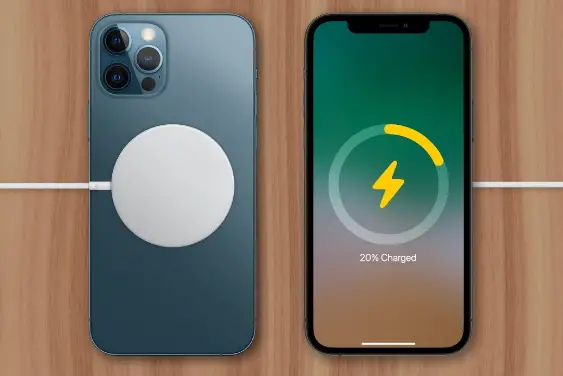Wireless charging has emerged as a game-changer in the world of technology, offering unparalleled convenience by eliminating cables and connectors. However, despite its growing popularity, many users complain that wireless charging is slower compared to its wired counterpart. But why is that the case? Let’s dive into the science and technology behind wireless charging to uncover the reasons.
The Basics of Wireless Charging
What Is Wireless Charging?
Wireless charging, or inductive charging, is a method of powering devices without physical connections. It relies on electromagnetic fields to transfer energy between a charging pad and the device.

How Does It Work?
The process involves a charging pad with a coil that generates an electromagnetic field. A corresponding coil in the device receives this energy and converts it back into electricity to charge the battery.
Comparing Wireless and Wired Charging
Key Differences
Wired charging uses direct electrical connections, allowing more energy to flow with minimal loss. Wireless charging, on the other hand, involves transferring energy through air, which is less efficient.
Why Wired Charging Is Faster
Wired chargers typically offer higher power outputs, enabling faster energy transfer and quicker charging times.
Factors Affecting Wireless Charging Speeds
Power Output Limitations
Most wireless chargers deliver lower wattage than wired chargers. For example, while a wired charger may deliver 20-65W, many wireless chargers max out at 15W, resulting in slower charging speeds.
Heat Management Issues
Wireless charging generates more heat, which can slow down the charging process as devices and chargers implement safety measures to prevent overheating.
Device Compatibility
Not all devices are optimized for high-speed wireless charging. Older models may have hardware limitations that cap the charging rate.
Efficiency of Energy Transfer
Why Energy Transfer Is Less Efficient
In wireless charging, energy must travel through air and device casings, leading to a significant loss. This inefficiency directly affects the charging speed.
Loss of Power During Charging
Around 20-30% of the energy can be lost during wireless charging, compared to just 5-10% with wired methods.
Coil Alignment Challenges
Importance of Proper Alignment
The position of the device on the charging pad is critical. Misaligned coils reduce efficiency and slow down charging.
How Misalignment Affects Speed
Even a slight misalignment can disrupt the electromagnetic field, significantly impacting charging performance.
Impact of Charging Pad Quality
Differences Between Premium and Low-Cost Pads
Premium pads often come with advanced features, such as better coil designs and improved heat dissipation, ensuring faster and more efficient charging.
How Quality Affects Charging Speed
Cheaper pads may not deliver consistent power, further slowing down the charging process.
Role of Charging Standards
Overview of Qi Wireless Charging Standard
Qi is the most widely adopted wireless charging standard, ensuring compatibility across devices but also setting limitations on maximum power output.
How Standards Impact Speed
Standardized limits on power output ensure safety but restrict the potential for faster charging.
Device Limitations
Battery Capacity and Technology
Larger batteries naturally take longer to charge, especially when limited by the wattage of the wireless charger.
Hardware Limitations
Some devices are not designed to handle high-speed wireless charging, limiting their performance.
Heat Management
How Heat Slows Down Charging
Excessive heat can damage batteries, prompting chargers to throttle power to maintain safe temperatures.
Ways Manufacturers Combat Heat
Innovative designs, such as cooling systems and heat-resistant materials, are being implemented to address this issue.
Distance Between Charger and Device
Why Close Proximity Is Crucial
Wireless charging efficiency drops significantly as the distance between the device and the charging pad increases.
Effects of Distance on Charging Speed
Even a millimeter of extra distance can lead to slower charging speeds.
Environmental Interference
Metals and Magnetic Interference
Metal objects or magnetic fields near the charger can disrupt the electromagnetic field, reducing efficiency.
How Interference Disrupts Charging
These interferences cause the charger to work harder, further slowing down the process.
Future Innovations in Wireless Charging
Improvements in Speed
New technologies like resonant and fast wireless charging promise faster speeds without compromising safety.
Emerging Technologies
Innovations like long-range wireless charging and higher-wattage chargers could soon revolutionize the industry.
Advantages and Disadvantages of Wireless Charging
Pros: Convenience and Reduced Wear on Ports
Wireless charging eliminates the need for cables, reducing wear on charging ports and offering a clutter-free experience.
Cons: Speed and Efficiency Issues
Despite its convenience, wireless charging still lags behind wired options in terms of speed and efficiency.
Conclusion
Wireless charging may be slower than wired methods, but its convenience and potential for future advancements make it a promising technology. While current limitations exist, ongoing innovations are set to bridge the gap and make wireless charging more competitive.
FAQs
- Why is wireless charging slower than wired charging?
Wireless charging involves energy loss and lower power output compared to the direct connection of wired charging. - Can wireless charging damage my phone?
Excessive heat generated during wireless charging can degrade battery life, but most modern devices include safeguards. - How can I improve wireless charging speed?
Use a high-quality charging pad, ensure proper coil alignment, and keep the pad free from interference. - Are there fast wireless chargers available?
Yes, some chargers offer fast wireless charging, but they may still be slower than fast wired chargers. - What is the future of wireless charging?
Emerging technologies promise faster speeds, higher efficiency, and even long-range wireless charging solutions.


